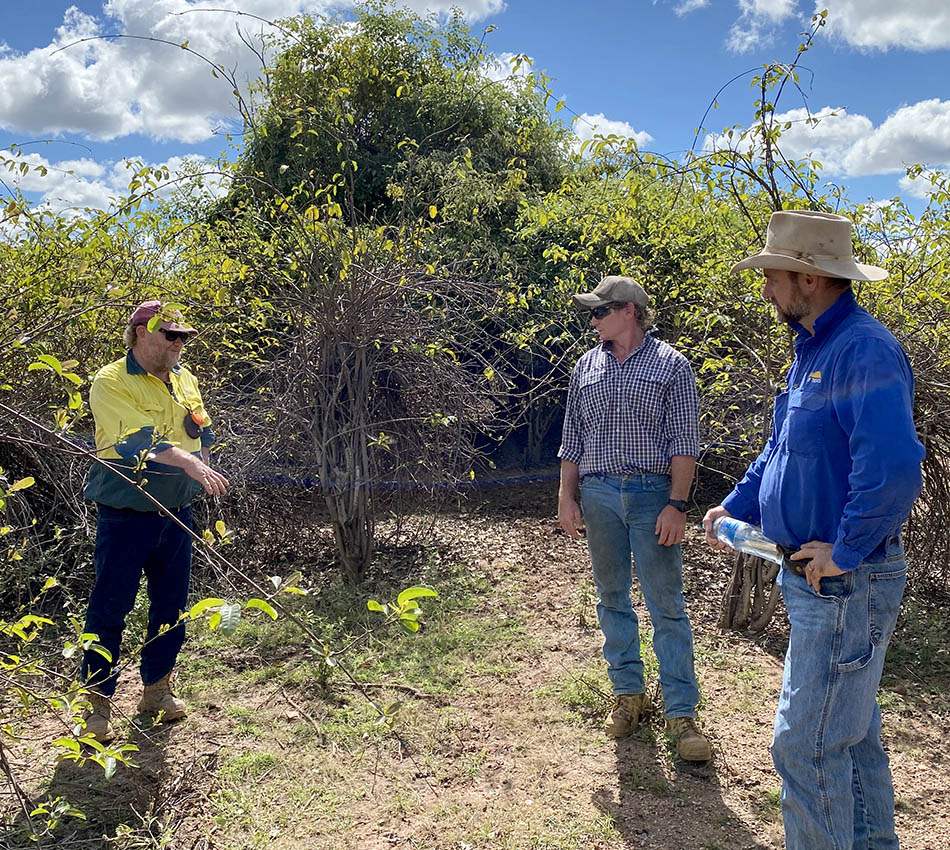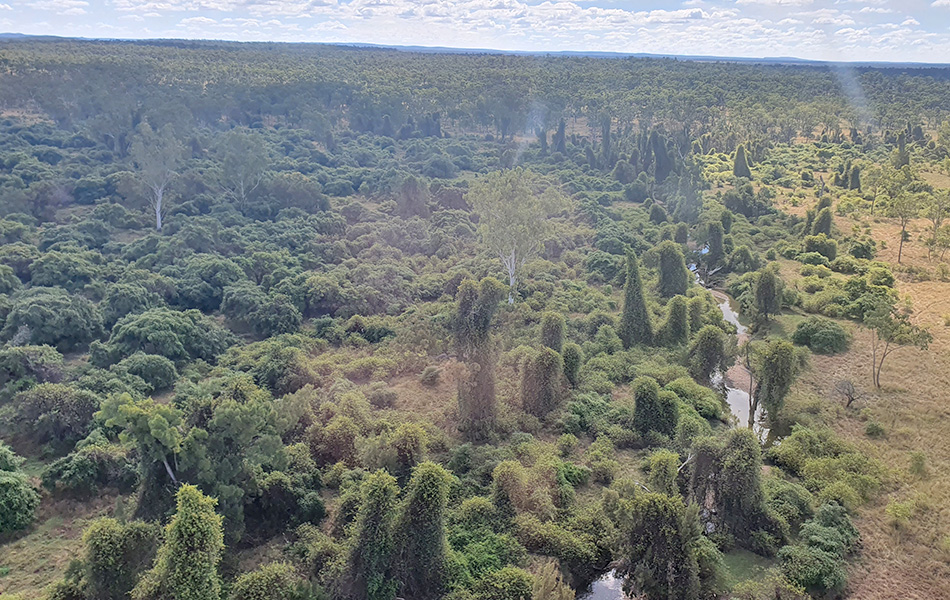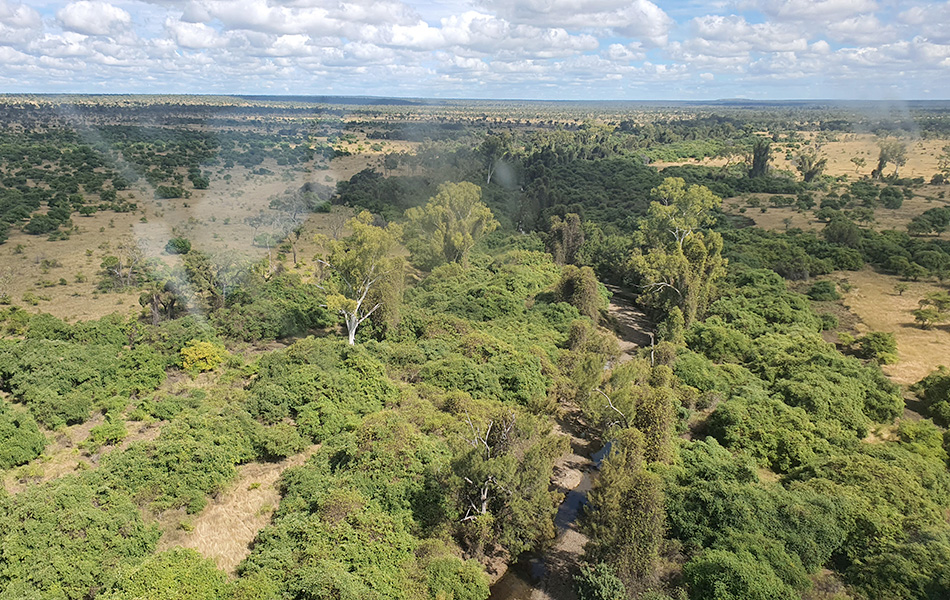Maryvale Creek properties — getting rid of rubbervine
A rubbervine infestation so thick it threatens to pull down 100-year-old trees will be tackled by a united trio of grazing properties along Maryvale Creek.
Guided by a company specialising in reducing large-scale rubbervine infestations in riparian areas, the three properties will bring everything they can to the fight with a combination of herbicide, fire, and grazing techniques.
They hope to bring the problem back to a level that would be manageable on each of the properties and to prevent the rubbervine from spreading downstream.
Maryvale Station, Niall Station and Mt Fullstop Station managing a total of more than 150,000ha are members of the cluster group formed as part of the NQ Dry Tropics Linking Landholders to the Frontage Country project, funded though the Queensland Natural Resource Investment Program.
The rubbervine is so thick, it has formed a canopy excluding light and there is no groundcover at all, so the plan of attack is to defoliate the rubbervine using herbicide as the Wet season begins, allowing vegetation to get established.
The new growth will dry off at the end of the Wet season, providing fuel for a controlled slow burn aimed at destroying the remaining rubbervine plants.
Maryvale Creek has already been fenced off and, as pasture returns to the area, grazing will be carefully controlled to maintain groundcover, and support a healthy grazing ecosystem.
A field day and demonstration will be held in conjunction with one of the controlled burns later this year or early in 2022 giving the project participants the opportunity to share with neighbours what they have learnt.
The project aims to support the collective action of landholders through cluster groups that share goals to improve the condition and extent of riparian vegetation as well as soil health.
Members of the newly-formed cluster identified the rubbervine infestation as being a major concern shared by each of them.
Two of the properties were already struggling with unmanageable rubbervine infestations and the weed was beginning to appear in numbers on the third property along the creek.
“The landholders were particularly keen to reduce the extent of the rubbervine in the creek and preventing it from spreading further downstream,” Senior Project Officer Chris Poole said.
The rubbervine was so severe in places that it was pulling down 100-year-old trees in the creek according to the site assessments.
Resolving an issue of this scale and magnitude required a higher level of intervention, so NQ Dry Tropics engaged Desert Channels Solutions, a business that has successfully treated large-scale rubbervine infestations in riparian areas using an integrated weed management program.
In the last year of the Linking Landholders project, NQ Dry Tropics will work with the Maryvale Cluster landholders to develop property plans and deliver coordinated activities to improve the condition of the frontage country and the riparian zone, including weed, pest and grazing management initiatives.
Participating landholders will also be trained in proven techniques for reducing and preventing rubbervine infestation within the riparian zone.
Monitoring over the course of the treatment will measure the improvement in the condition of the riparian and frontage country.
“Ideally we will see an improvement in the health of the vegetation before the end of the project, but at a minimum, we will definitely see a dramatic decline in rubbervine,” Mr Poole said.
Peter Spence DCS, (left), Alex Harrington Maryvale grazier, (centre) and NQ Dry Tropics Senior Grazing Field Officer Chris Poole.
The rubbervine infestation along Maryvale Creek (pictured above and below) presents a problem too big for a lone grazier to take on.



